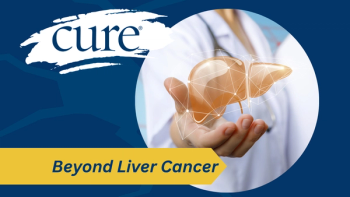
Discussing the Future of Immunotherapy in Non-Small Cell Lung Cancer
Key Takeaways
- The IMpower150 study indicates a potential benefit of a quadruplet regimen in EGFR-positive lung cancer, improving progression-free survival.
- Concerns about toxicity and tolerability of the four-drug regimen persist, impacting its adoption in clinical practice.
One expert weighs in on the use of new immunotherapy agents and combinations in treating non-small cell lung cancer.
As researchers have learned more about the mechanism behind the disease, targeted therapies for patients with EGFR-positive
At the 16th Annual Winter Lung Cancer Conference in Miami Beach, CURE’s sister publication, OncLive, sat down with Garon, who is director of thoracic oncology at the David Geffen School of Medicine at UCLA, to discuss the findings of recent clinical studies and how they impact the future use of
You just spoke about bringing immunotherapy into EGFR mutations. Can you start by discussing what the optimal regimen is for these patients right now?
Garon: I think we’re at the point where we don’t have an optimal approach to immunotherapy in this population of patients. One of the things that I addressed in my talk was the dearth of data regarding this population of patients.
The strongest data to date, I would argue, is from the
Interestingly, there was not a clear benefit — or at least as clear a benefit — when the (Tecentriq) substituted for the (Avastin), really begging the question whether there was something in particular about the four drugs together.
That, I think, to date, is the most compelling data set. It is not part of the approval for this quadruplet regimen, but it is something that we are often able to get to patients based on recommendations from the National Comprehensive Cancer Network.
What are the next steps with that data?
I think that data is, what that data is. It was about 100 patients out of a large clinical trial and I don’t know whether or not there is an effort to replicate that in a larger number of patients. I know that some of the other PD-1 or PD-L1 inhibitors are looking at studies of that design, although generally not incorporating the (Avastin).
One of the things that is an advantage for the IMpower150 study is that the same company owns both (Avastin) and (Tecentriq), which makes it easier to run that study looking at the quadruplet. Nonetheless there are some biological reasons to imagine that the inclusion of (Avastin) is important in this.
We know that, particularly from data out of Japan that, certainly for progression-free survival, the addition of (Avastin) clearly adds to the EGFR inhibitor (Tarceva [erlotinib]) in two studies that have assessed that. We are also awaiting data from a study of (Tarceva) with or without (Cyramza [ramucirumab]).
Are there any concerns with toxicity with a four-drug regimen like that?
There certainly are concerns with toxicity. If one looks at the IMpower150 study, as one might expect, the toxicity is a little bit worse in the quadruplet than it would be in the triplet. That’s in some ways to be expected.
One of the other issues, aside from toxicity, is that the backbone of the regimen, carboplatin, paclitaxel and (Avastin) — although a very reasonable, approved regimen for many years now – has lost favor among many practitioners [who instead opt] for carboplatin and pemetrexed. It’s a little hard to find in the objective data what the reason for that is, because when they’re compared with respect to efficacy, the outcomes are not particularly disparate. But when you talk to practitioners, they will tell you it is for tolerability.
As part of the PointBreak study, tolerability was assessed and one of the interesting things there is that neuropathy was the one toxicity that was clearly different between the two.
The other, which frankly, is a big issue in my practice, is the hair loss. Many of my patients are continuing to work and they don’t want to lose their hair. Losing your hair is something that is associated in people’s minds with being sick and they don’t like that, so that’s been another issue.
Where do you see this potentially having a role — in later lines of therapy, or earlier on?
I think for right now the thought would be to have this after the completion of EGFR-TKI. The data supporting PD-1 and PD-L1 inhibitors prior to any EGFR-TKI is quite scant, so that’s where I would foresee it.
Now, one thing I would also argue is that I’m hopeful that this is not the “best it gets” for immunotherapy in EGFR-mutant non-small cell lung cancer. I think that the toxicity is significant with this regimen and the efficacy, although in the study it certainly looked better than chemotherapy alone, we still hope for better and hopefully we’ll see that in the coming years.





